Chippewa and Eau Claire Rivers
Introduction
Text-to-speech Audio
Images
The Eau Claire River flows into the Chippewa River in downtown Eau Claire (2020)
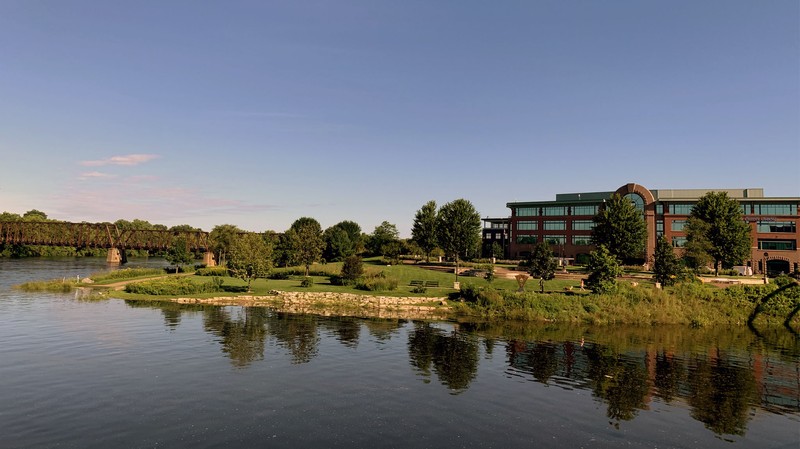
Confluence of the Eau Claire and Chippewa Rivers (ca. 1902)
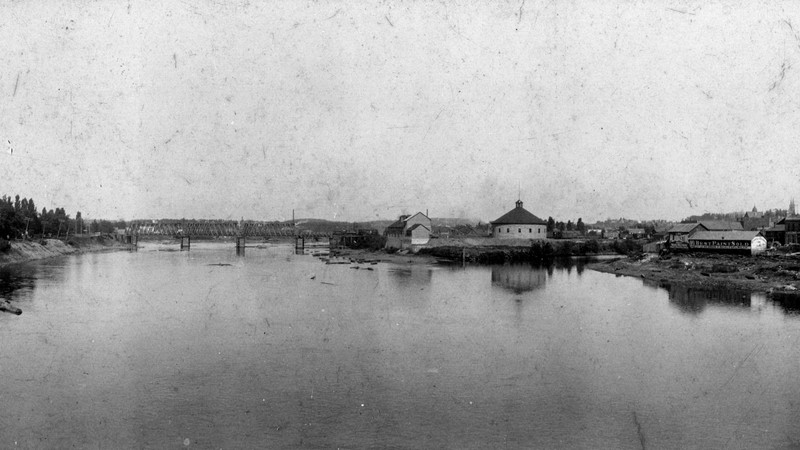
Looking up the Eau Claire River from the confluence (2020)
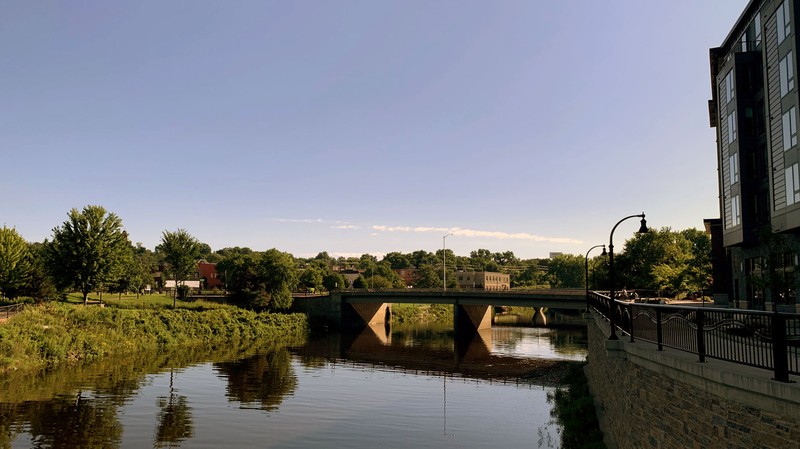
Eau Claire River near the confluence of Chippewa River, downtown Eau Claire (ca. 1895-1905)
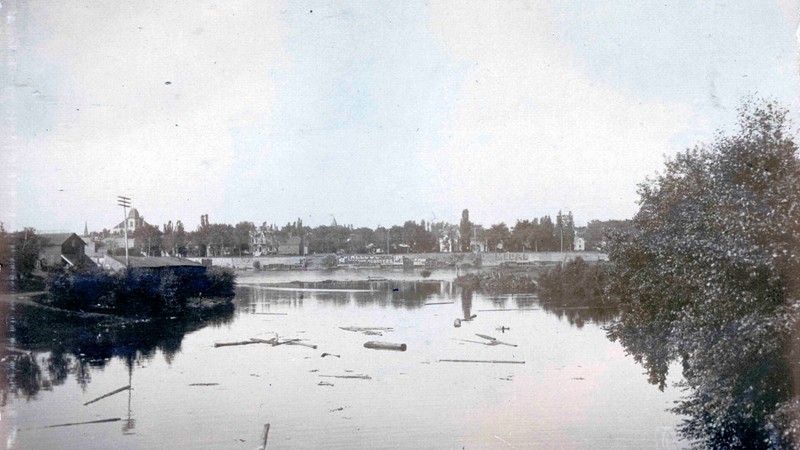
Historical marker explaining the name of Eau Claire River (1936)
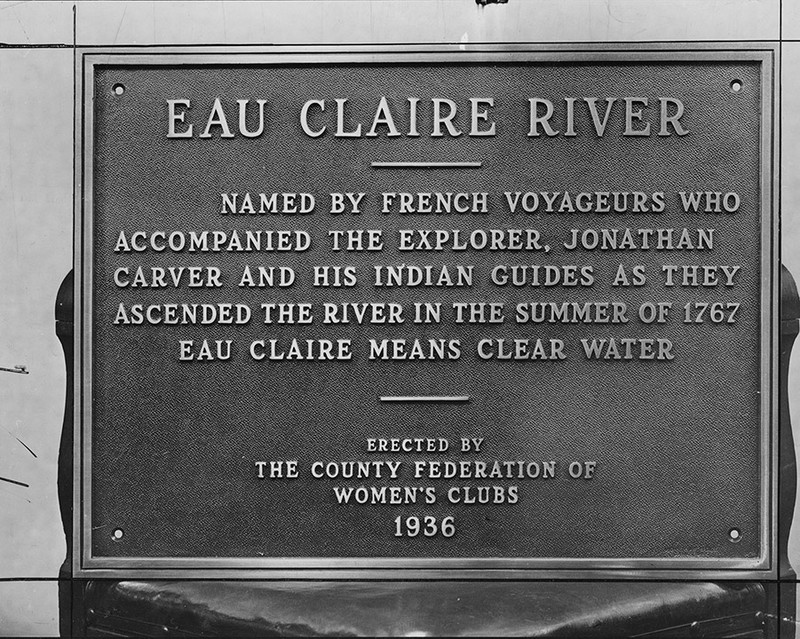
Chippewa River looking north from Madison Street Bridge (ca. 1900-1920)
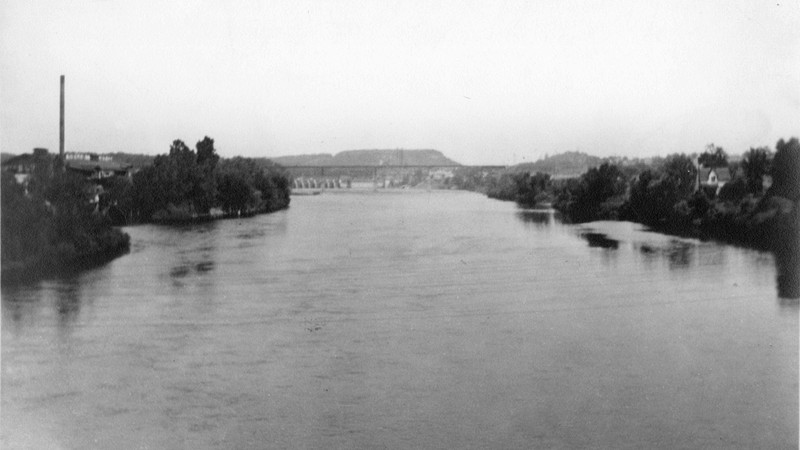
Backstory and Context
Text-to-speech Audio
What is today the modern City of Eau Claire was originally inhabited by Sioux and Ojibwe nations. These communities have lived on the land for centuries and eventually met the many European explorers that passed through and settled in the area. French fur traders were the first explorers to navigate the rivers, with help from Indigenous guides. In the mid-eighteenth century English fur traders led by Jonathan Carver paddled across the rivers and once again met the existing peoples inhabiting the land. Carver returned to England and wrote a book about his travels, leading to his attribution as the first explorer to the area.
The name Eau Claire translates to “clear water” from French, even though some records indicate that English settlers were the first to settle the land. Indigenous communities noticed the characteristics of this area and its two rivers much earlier than the arrival of European traders. The Sioux term for the area described the clarity of the rivers and characterized the area generations before the French translation to its current name.
Today, a historical marker on the banks of the Eau Claire River preserves part of the origin story of the city. It reads, “Eau Claire River - Named by French voyageurs who accompanied the explorer Jonathan Carver and his Indian guides as they ascended the river in the summer of 1767.” This plaque was erected by the County Federation of Women’s Clubs in 1936 and remains along the river today. For centuries, many communities gathered along these rivers. Today the Chippewa and Eau Claire Rivers remain central in the homes, work, and recreation of the larger City of Eau Claire.
Sources
Giffey, Tom. How Did Eau Claire Get Its Name? The Water Is Clear, but the Truth Isn't., VolumeOne. August 11th 2017. Accessed July 28th 2020. https://volumeone.org/articles/2017/08/11/10406-how-did-eau-claire-get-its-name-the-water-is.
Eau Claire River, Wisconsin Historical Markers. May 22nd 2015. Accessed July 28th 2020. http://www.wisconsinhistoricalmarkers.com/2015/05/eau-claire-river.html.
Hannah Lahti
Chippewa Valley Museum: 180141-0025
Hannah Lahti
Chippewa Valley Museum: 180142-0032
Chippewa Valley Museum: 148800-0007
Chippewa Valley Museum: 180141-0007
